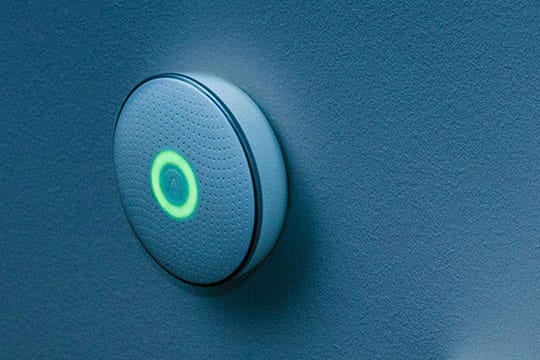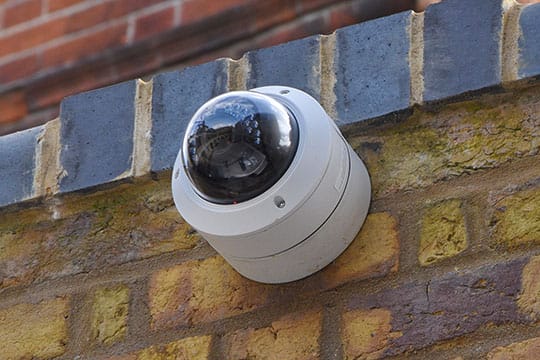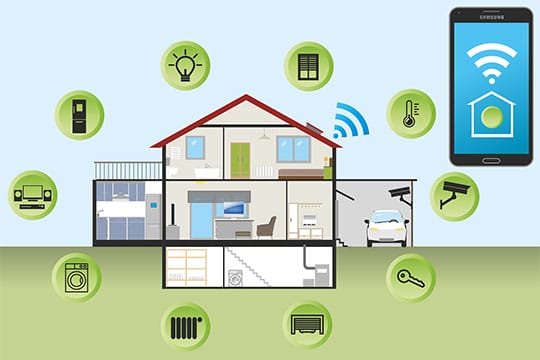We are living in an era where technology is ruling in every area of our lives – shopping, household chores, work, transportation, and more. Home automation is one of the latest technologies that allows us to control home appliances such as lights, fans, refrigerators, doors, ovens, dishwashers, television, music, etc. from anywhere and at any time by using techniques such as GSM, android application, web pages, cloud, and the Internet of Things (IoT). It greatly helps reduce human efforts. Another prime objective of the home automation technology is to save energy as well as time, as it allows controlling home equipment automatically.
At the CES 2018 and 2019, several home automation trends were announced that give us an idea about what are the things coming up in the future. We might be able to control each and every appliance in our homes.
1. Voice assistants:

When voice assistant Alexa was introduced in the Echo smart speaker, it brought in a new revolution in the smart home or home automation space. There were announcements made about almost every smart home device on the market being integrated with Google Assistant, Alexa, and Siri. Several companies unveiled products having smart assistants built directly into the device. One of these is the Lenovo Smart Screen, a voice-controlled device with a built-in Google Assistant that makes your work easier and live smarter. It does everything that a Google Home or Google Home Mini can do and even more. There were also announcements made regarding Alexa or Google Assistant compatibility, which refers to the connection of smart home devices to the voice assistant via a smart hub.
Recommended for you: 4 Ways Digital Technology Revolutionized Modern Logistics Operations.
2. Air and water monitoring:

There were announcements related to smart air monitors and water leak detectors. For example, Elexa Consumer Products, a maker of high-tech electrical components, announced the launch of Guardian, the first water leak prevention system that requires no installation tools. Featuring an autonomous valve controller and individual leak detectors, the system detects leaks by sensing water from drips or flooding. Airthings, a global leader in accurate and easy to use radon gas detectors, announced the launch of their smart air quality monitor called Airthings Wave that monitors three vital components of air – volatile organic compounds (VOCs), which refer to harmful chemicals that are present in indoor environments due to the use of products such as sprays, paints, etc.; temperature; and humidity; which allows tracking the air quality in a house.
3. Security Systems:

The CES 2018 also saw the launch of technologies where users can control devices through a voice assistant such as Amazon Alexa or Google Assistant to perform tasks such as locking doors and watching video footage. RCA, one of the oldest and well-known brands in the consumer electronics industry, announced the launch of its Wi-Fi camera system and Wi-Fi doorbell camera. The Wi-Fi doorbell camera allows homeowners to see and talk to visitors from anywhere through an RCA security mobile app. It uses a secure wireless network for its operation. It eliminates any chances of false alerts as the app has a customized field of motion. This camera also has a 180-degree field of view and is certified for outdoor use.
The RCA Wi-Fi HD security camera system is powered by USB and is controlled on a mobile device via the RCA Wi-Fi camera app. At CES 2019, EZVIZ, a global smart home security brand, launched a Wi-Fi video doorbell called DB1 along with its new wireless HD battery-powered camera kit, the C3A+W2D. The 3 MP lens of DB1 can capture a 180-degree vertical field of view, allowing users to have a complete view of visitors. The new camera kit launched comes with the W2D base station and a C3A Wi-Fi camera that is run by battery. The C3A operates independently and can be placed anywhere. Its ultra-wide-angle view and great night vision feature facilitate full day and night protection.
You may also like: Smart Home Technologies That Are Improving Everyday Life.
Final Words:

Apart from these, many more futuristic devices were introduced at the CES. And with new innovations coming up constantly, we would surely achieve our goal of having a fully automated home that enables us to manage all the household chores efficiently.
The market for home automation is growing at a rapid pace. Driving it are factors such as a rise in energy cost, government regulations for energy usage and CO2 emission, technological advancements, and growing awareness for efficient energy usage among consumers. As per the report by Allied Market Research, the global home automation market garnered $39,607 million in 2016 and is projected to reach at $81,645 million by 2023, growing at a CAGR of 11.2% during the forecast period, 2017 – 2023.
This article is written by Sharmistha Sarkar. She has always had a keen interest in reading and writing. Though an engineering graduate, she forayed into the field of writing due to her love for words and the urge to do something different. Allied Market Research has given her the chance to gain knowledge about different subjects as a senior content writer.
 This article is written by Sharmistha Sarkar. She has always had a keen interest in reading and writing. Though an engineering graduate, she forayed into the field of writing due to her love for words and the urge to do something different.
This article is written by Sharmistha Sarkar. She has always had a keen interest in reading and writing. Though an engineering graduate, she forayed into the field of writing due to her love for words and the urge to do something different. 




